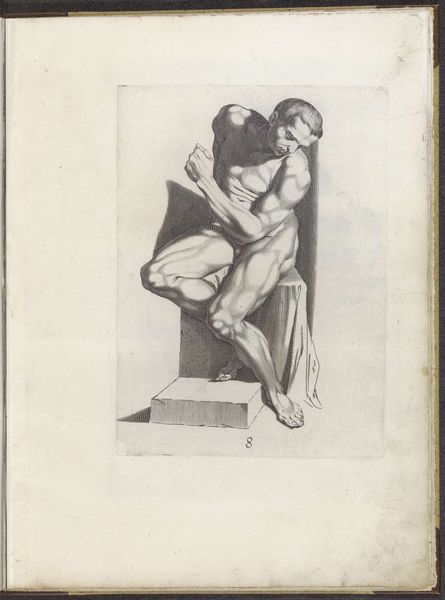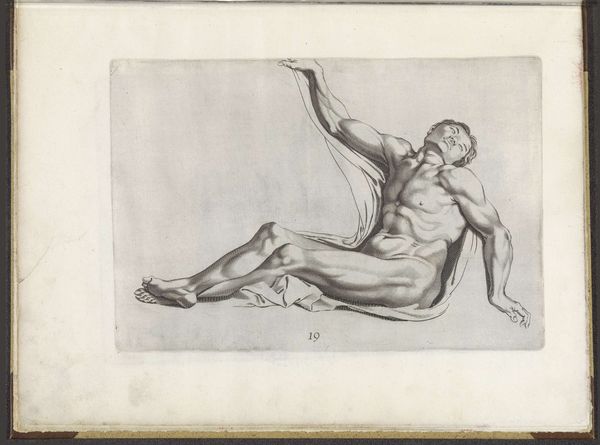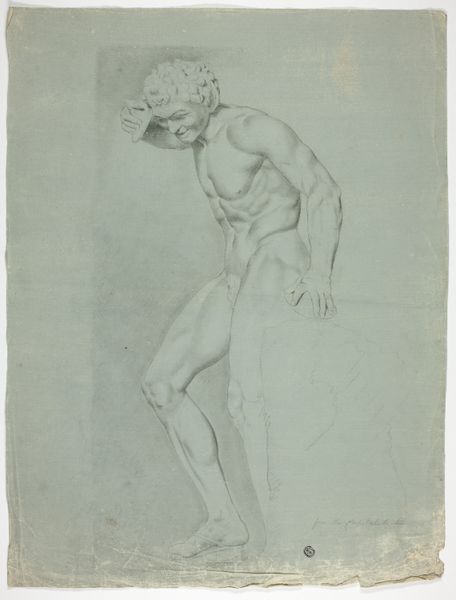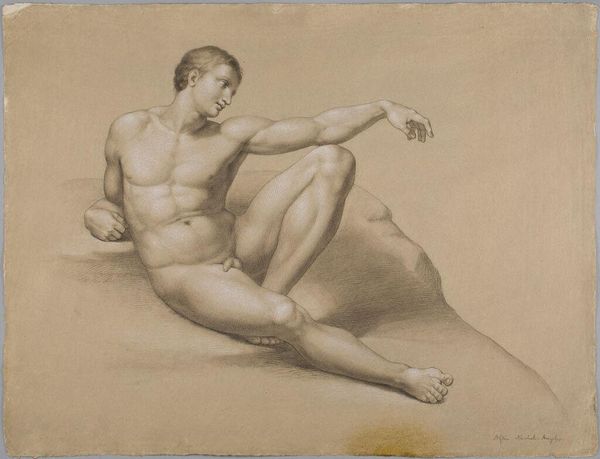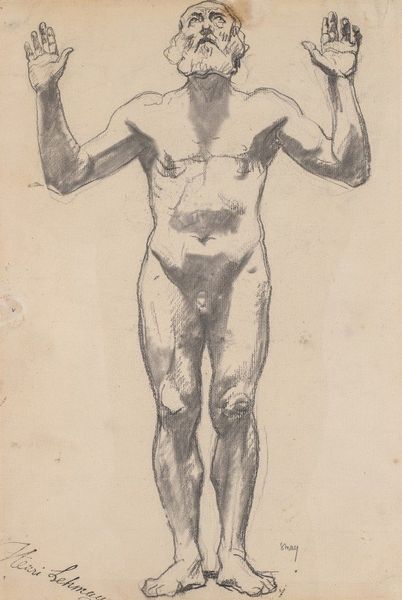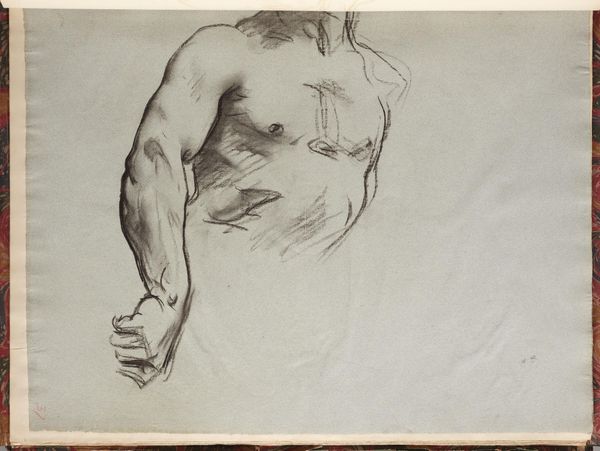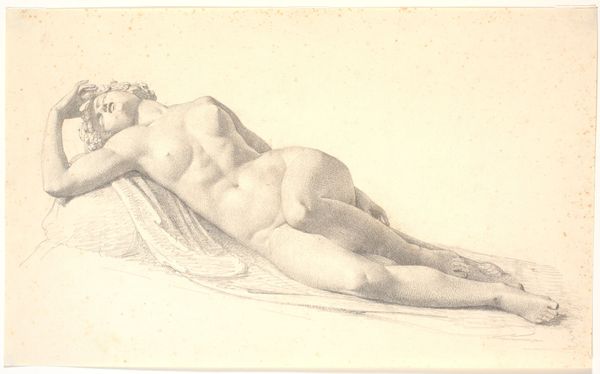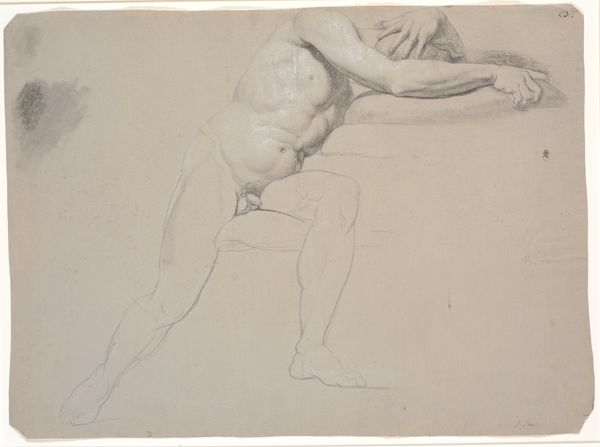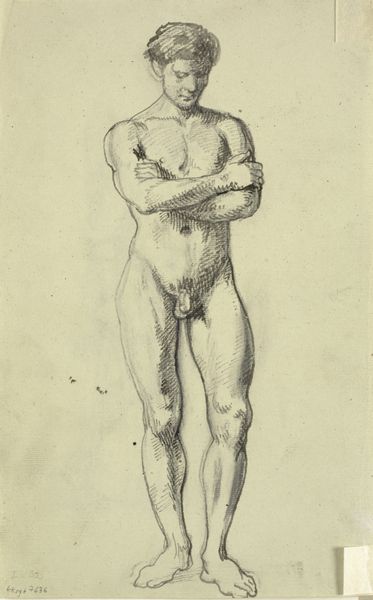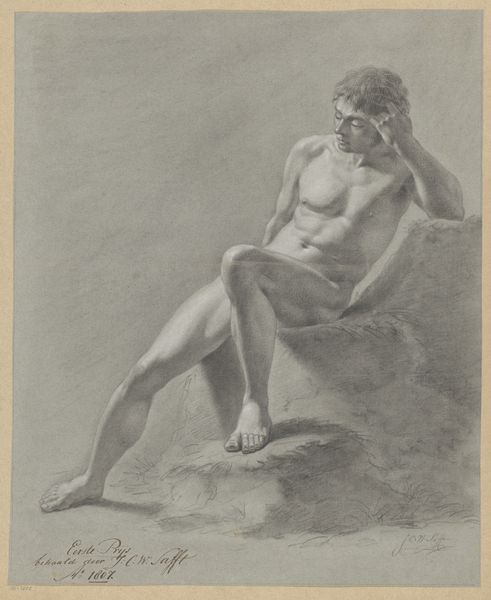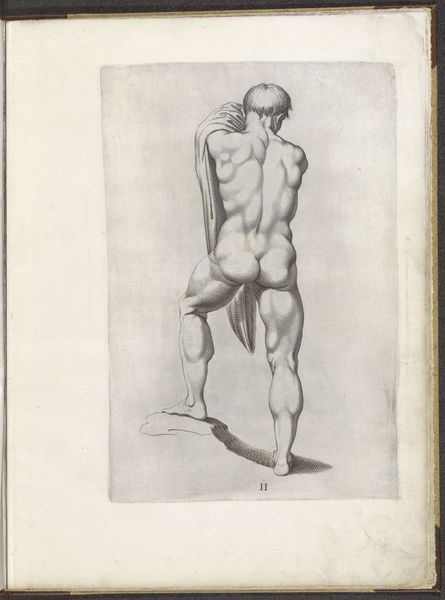
drawing, paper, ink
#
portrait
#
drawing
#
baroque
#
pencil sketch
#
figuration
#
paper
#
ink
#
chiaroscuro
#
academic-art
#
nude
Dimensions: height 184 mm, width 274 mm
Copyright: Rijks Museum: Open Domain
Curator: Pieter de Jode I created this drawing, "Tekenvoorbeeld van een naakte op zijn rug liggende man," which translates to "Drawing example of a nude man lying on his back," around 1629. It's currently held in the Rijksmuseum. Editor: He looks...uncomfortable. It's beautifully rendered in ink on paper, you can almost feel the texture, but there's a tension in his posture. Almost like he’s resisting the pose itself. Curator: Interesting. Given the Baroque context, this probably stems from academic art traditions that promoted specific poses. The chiaroscuro is quite prominent here. Notice how the light and shadow define his musculature. Editor: Yes, that interplay is intense. But who decides what’s an "ideal" or a "correct" way to represent a body, right? Was this used as a teaching example, normalizing a certain...hyper-masculine physique for aspiring artists? Curator: Quite possibly. Academic art, while aiming for beauty and accuracy, can also reflect and reinforce societal ideals. Consider the inherent power dynamics – the artist observing, the model posed, the values projected. And then think about access. Who was included and who was excluded from art education. Editor: Exactly! And in that exclusion we lose so much – different perspectives, different kinds of bodies, different experiences of being. I wonder about the model in this case, too. His agency in all of this, his own thoughts as he had to hold this very contorted pose, almost defiant expression. Curator: The drawing prompts us to ask all these questions – who creates, who is represented, and whose perspectives are valued? We read beyond mere depiction of muscles and anatomy. Editor: Definitely. It reminds me to think critically not just about the aesthetics of historical artwork, but also about the stories they tell, intentionally or unintentionally. Curator: Art becomes an invitation. A chance to examine beauty with wisdom, nuance, and maybe even a bit of playful mischief. Editor: Yes. So true.
Comments
No comments
Be the first to comment and join the conversation on the ultimate creative platform.
